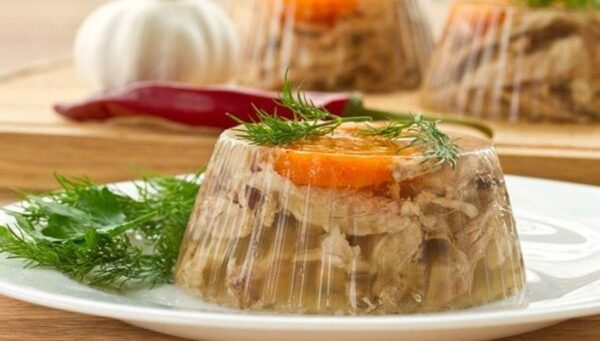Ziladia, Pihti or Tsiladia
Ziladia is an exquisite dish known since antiquity that was especially beloved in Byzantine times. Pihti or tsiladia, as it is called in Crete (due to its Venetian origin), or ziladia, as it is called in the region of Thessaly or gelatine in Cyprus, is a dish made with the meat from select parts of pork boiled with spices.
It was essential for every household for getting through the difficult winter period with the help of pork. The tsiladia was stored in clay pots in the coldest part of the house.
Ziladia is not eaten as a main course, but rather as a spicy appetizer, allowing it to be heavy on the spice. The appetizer is prepared during the Christmas or New Year season, when pork meat is most available. Many people also like to eat it during the carnival period.
The ingredients are generally simple: the pig’s head and legs are thoroughly cleaned, washed and placed in a saucepan. They are brought to a boil using as much water as needed to cover the meat, with salt added. Alternatively, abundant amounts of sweet and bitter orange juice, with bay leaves and cumin, are used. In the Cyclades this broth is enriched with garlic, celery, sometimes with pickled capers and grated orange peel. In Cyprus the powerful aroma of lasmari (rosemary) and cinnamon give the gelatine a different character. After the ingredients come to a boil, the broth is extracted and, when it starts to thicken, put in the refrigerator. The juice now becomes jelly-like, or tzilio, as the Cretans call it.
The final but by no means unimportant aspect of the dish is its essential acidity, a quality that, together with the spices, balances out the fattiness of the pork meat.




